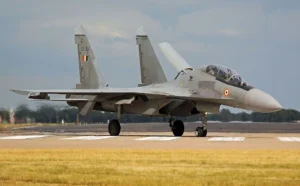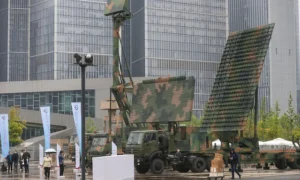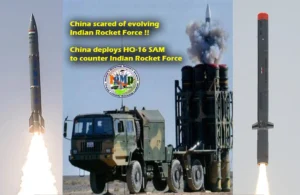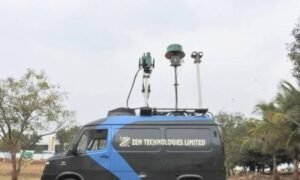Source : The Hindu
 |
| Indian Army Air Defence Corps |
New Delhi: Missiles and Unmanned Aerial Vehicles (UAV) are likely to be a major future threat, calling for a mitigation strategy as part of an integrated air defence, and underlining the need for a comprehensive air defence solution. That’s the biggest takeaway for India from an Army analysis of the war in Ukraine, in the context of the air battle fought there and its implications for Indian air defence, according to defence sources.
With the Russia-Ukraine conflict having lasted almost a year now, the Army is also feeling the pinch in terms of spares and ammunition, particularly for its air defence and armoured fleets, which are largely of Russian origin, a fact recently acknowledged by Army Chief General Manoj Pande.
Earlier this month, General Pande said that the Army had carried out a detailed analysis on the various lessons that the conflict threw up for India — on weapon systems, tactics and operational procedures. These lessons will be applied and incorporated in the Indian context, he said.
“For ground-based air defences (GBAD), the most important aspect is Survivability against Suppression and Destruction of Air Defence (SEAD/DEAD) operations by the adversary. Deconfliction of air defence missiles with interceptors in exclusive engagement zones and decentralised execution of air defence function is a must,” said a source, elaborating on the lessons for GBAD to be learned, which have emerged crucial, from the Russian offensive and the Ukrainian response.
Ukraine’s air defence success
The Russian Air Force attempted to gain control of Ukrainian air space as a prelude to the war. In the first three days of the conflict, there was an average of 140 sorties per day, with about 10% of the Russian aircraft lost to the Ukrainian air defences, analysis shows. Russian strike operations after the first three days were largely confined to stand-off launches using missiles, sources said, adding that this was also prompted by Russia’s heavy losses due to Ukraine’s Man Portable Air Defence Systems (MANPADS).
Ukrainian GBADs shot down almost 50% of Russian cruise and ballistic missiles launched against multiple targets, despite the fact that they were operating in tandem with Russia’s Shahed-136 UAVs, the source observed.
Loitering munitions are another major threat that has emerged in this war, posing asymmetric challenge to both armour as well as air defences. Analysis has shown that the best air defences against them are high rate gun systems, better optic sights, fragmented ammunition and Active Electronically Scanned Array (ASEA) radars. MANPADS have been noticed to be highly effective when in range and with night vision, the source said. This is an area that the Indian Army has been looking to modernise for a while, with limited success.
Air defence modernisation
The Army’s air defence is in the midst of a major transition. Several inductions are in the pipeline and efforts are underway to put in place a layered air defence net for various ranges and altitudes, which has only gained urgency post the Ukraine war.
As part of modernisation efforts, a ₹200 crore networking and automation project — on the lines of the Indian Air Force’s Integrated Air Command and Control System (ICCCS) network — is now ready. “All tests have been completed and it is ready to be fielded. Integration is distributed at all levels. It is scheduled to go for approval of the competent financial authority by March 31,” said sources who know of the development.
The Defence Acquisition Council (DAC) which met on January 10 had given its approval for procurement of a Very Short Range Air Defence Systems (VSHORAD-Infrared Homing) missile system currently under design and development by the Defence Research and Development Organisation (DRDO).
Emergency procurement
The Army has a major requirement for VSHORAD and several attempts to import the systems have not materialised. A major deal with Russia, which was shortlisted in a bidding process, has been stuck for several years and is now on the verge of cancellation. In the interim, in the backdrop of the standoff with Chinese forces in eastern Ladakh, the Army made an emergency procurement of Igla-S systems from Russia. The contract was signed in December 2020 and the equipment was delivered by December 2021. This includes 24 launchers, 216 missiles and testing equipment, as reported by The Hindu earlier.
At the short range level, the Army has the indigenous Akash Surface to Air Missile (SAM). A Quick Reaction SAM is under development by the DRDO, with a range of 25-30 km. At the next range, the Medium Range Surface to Air Missile (MRSAM) project jointly developed by the DRDO with Israel has now entered production, sources said.
General Pande had also stated that sustenance of weapon systems and equipment, in terms of spares and ammunition, is one issue that the Army has addressed. “We got a waiver and sanction to procure even if it is ex-imports for the next two to three years. We have 40 such cases, including spares and ammunition, largely pertaining to air defence and tank fleet. We are looking at how the sustenance requirement is met,” he added.








